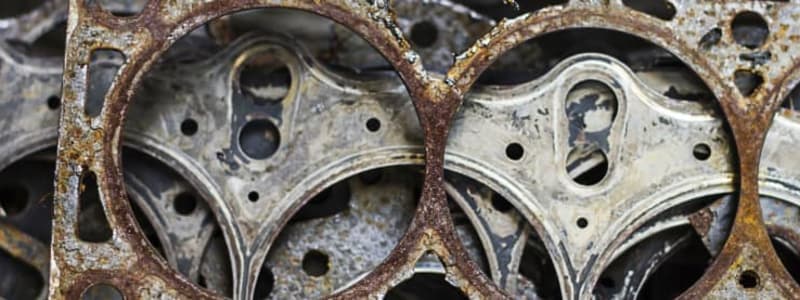
When first investigating signs of a leaking head gasket, the cap of a coolant reservoir or radiator, should not be opened on a hot engine! The next step is checking the oil dipstick and if it’s showing a higher level than normal, the cause could be coolant leaking into the crankcase, by way of the cylinder. This can be confirmed if the oil dipstick displays a milky, yellow, or brown looking substance.
Get up to quotes for engine repair
Can I repair my car's Head Gasket?
Head gasket sealing is primarily regarded as a temporary repair and which can be necessary for various reasons. A popular and relatively economic method of affecting this type of repair is with a bottle of cooling system or head gasket sealant, added to the cooling system. There is a wide choice of these products available from auto-parts stores, with most being capable of temporarily stopping or reducing leaking coolant. Whether this can be regarded as a permanent repair, is a matter of conjecture related to the severity of the problem. If you follow this course of action make sure that when adding a sealant to the cooling system, that you follow the manufacturer’s instructions exactly. In general, you should drive your vehicle for between 20 to 30 minutes, allowing the sealant to circulate through the engine and detect the leak. The majority of these product types contain chemicals that when exposed to air or combustion gasses, solidify.
What if the repair doesn’t solve the problem?
In the event of your finding the sealant process does not solve your problem, and then you are left with only one other option: replace the head gasket! If you decide to place it in the hands of a repair shop or car dealer, then be prepared for a significant bill, because this can be a labour intensive job, depending on the engine type, as the cylinder heads must be removed for the new gasket(s) to be installed. If you decide to make the repair yourself, then you will benefit from a shop manual or a reliable online data source, especially regarding the head gasket replacement preparation. Available information available provide you with step-by-step procedures for replacing the gasket.
How-to Repair a leaky Head Gasket
Your first actions are to disconnect the battery and to drain the cooling system. This is followed by removal of all components directly attached to the intake manifold. Importantly, do not forget to clearly identify each component position for the replacement process! After you have disconnected the exhaust manifold from the cylinder head, on OHC engines you then remove the front engine cover and the timing belt or chain. Indicate the timing marks for the belt or chain to be reinstalled correctly. The valve cover should then be removed from the cylinder head and in the event of the engine being a pushrod type, loosen or remove the rocker arms, then remove the pushrods. Once all the head bolts have been removed, discard them for replacement with new bolts, should they be torque-to-yield (TTY) bolts.
Standard head-bolts may be reused proving they are not damaged! After ensuring all bolts have been removed, the cylinder head is detached from the engine. Thoroughly clean and then inspect the connecting surfaces of the cylinder head and engine deck. Should the head or deck surfaces not be flat and smooth, have either or both resurfaced by a machine shop! An aerosol gasket remover and a scraper can be used for cleaning the surfaces of the head and block, after which, ensure both surfaces are perfectly clean. The new head gasket must be fitted to the engine block deck, ensuring the correct side is upward facing. Ensure all securing holes and openings are in line with the block and head; only then may the cylinder head be replaced on the block.
Head bolts are tightened in a specified sequence, to a determined torque value with a torque wrench and angle gauge when using TTY head bolts. This is a critical procedure and must be correct for a proper head gasket sealing. The final stage is reinstallation on the engine of the valve-train components, timing chain or belt, valve cover, front-engine-cover, exhaust and intake manifolds, wiring and plumbing. A torque wrench will tighten all fasteners, as specified. Critically, check and adjust valve-lash as required and the timing belt or chain alignment. Finally, refill the cooling system and connect the battery.
Get up to quotes for engine job






